by Kevin T. Karlson
A very nice photographic showcase of the amazing bird life of Cape May, New Jersey.
November 2, 2010
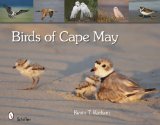
by Kevin T. Karlson
A very nice photographic showcase of the amazing bird life of Cape May, New Jersey.
October 26, 2010
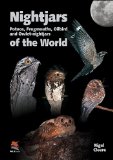
by Nigel Cleere
A generous amount of large, great photos highlight this identification guide.
October 15, 2010

by Harvey E. Oyer III
A wonderful children’s book – full of adventure, educational, and an introduction to the important subject of conservation.
October 8, 2010
This is an initial overview of the new The Stokes Field Guide to the Birds of North America. A more detailed review is forthcoming, but I wanted to go ahead and post some thoughts before the book is widely available.
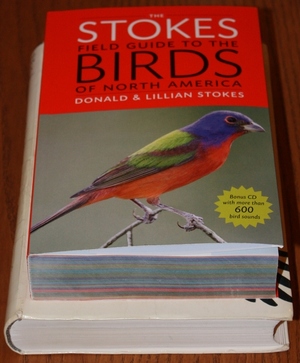
This thing is thick and hefty.
The first thing you’ll notice about this book (well, after the gorgeous bird on the cover) is the size. Not so much the trim size, which is larger than the National Geographic guide but smaller than the big Sibley and Peterson, but the thickness and heft. But 800+ pages don’t seem that bad when you realize that this guide uses over 3,400 photographs to cover 854 species.
If you do the math on the numbers above, you find that there should be an average of four photos per species. That seems about right. Most birds have a complete page devoted to them, with three to six photographs at the top, accompanied by text and range map at the bottom of the page. Some species get “only” half a page, while members of more variable groups, like hawks and gulls, usually have two pages. The layout of the guide, in which the photos are placed flush with the edges of the page, reduces white space and thus allows the pictures to be reproduced in a larger size than otherwise possible.
The text starts by focusing on the bird’s shape, and then proceeds to describe the plumages, broken down by age and gender. Notes on habitat and voice are given. Finally, it gives information on subspecies: how many subspecies are found in North America, their names, ranges, and how to differentiate them. The rather small range maps indicate the bird’s permanent, breeding, winter, and migratory ranges. They also use dotted lines to show where it rarely occurs.
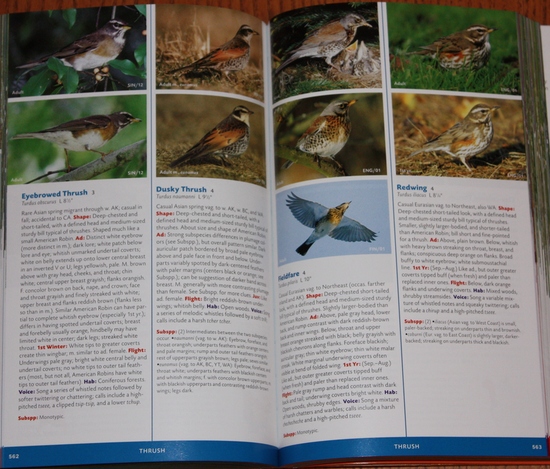
Many rare and range-restricted birds are included, and get full accounts just like the more common ones.
My initial impression of the Stokes guide is very favorable. And while I think there are some improvements that could be made, this is definitely a field guide worth having. It will be impractical to use in the field due to the size and weight. But the features directly contributing to that – the number of species and generous amount of space devoted to each one – make it an ideal reference for your car or home.
Continue on to the Full Review.
Lots of bird book reviews this month.
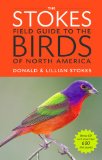
For the fourth straight year there’s a new photographic field guide to North American birds. This latest one is by the well-known and highly regarded husband and wife duo of Donald and Lillian Stokes. I haven’t had a chance to really delve into it yet, but so far it’s pretty impressive. I’m planning on doing something different to give everyone a good look at it, but in the mean time, check out the reviews at 10,000 Birds and Birding is Fun!. There’s also a fantastic interview with the authors.
If you’re anxious to get a copy, you can enter to win one through the 10,000 Birds Conservation Club. And if you don’t luck out there, be on the lookout here for a giveaway.
by Miles McMullan, Thomas Donegan, and Alonso Quevedo
An amazingly compact guide to the most bird-diverse country on the planet.
I’m hosting the latest edition of the I and the Bird blog carnival at Birds on the Brain. Naturally, I had to work bird books into it, pairing the submissions with an appropriate title. So check it out, there are lots of worthwhile submissions.
September 9, 2010
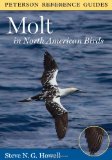
by Steve N.G. Howell
An indispensable guide to the oft-confusing process of molt.